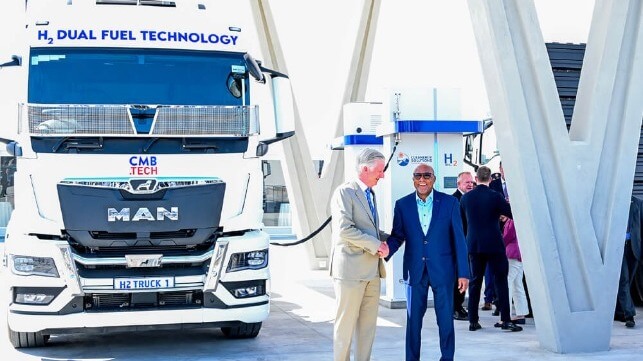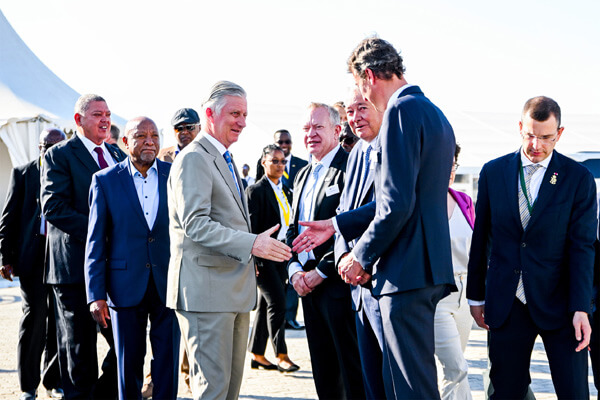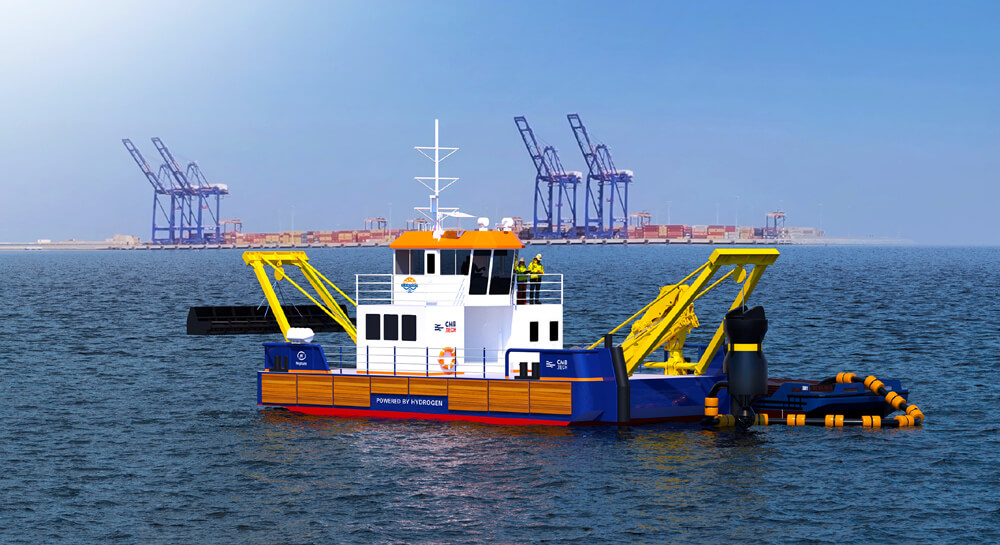Belgium and Namibia to Develop Africa’s First Hydrogen Ship, Infrastructure

Partners from Belgium and the African nation of Namibia mapped out a plan to develop the continent’s hydrogen infrastructure for the production and export of the energy source as well as launching Africa’s first hydrogen-fueled vessel. It is part of an ambitious plan to make Namibia a frontrunner in the global green hydrogen economy and supply the alternative energy source both to passing ships and industrial users in Belgium, Germany, and other industrial clusters in Europe.
The plan was unveiled during an event at Walvis Bay, Namibia that included His Majesty King Philippe of the Belgians and Dr. Nangolo Mbumba, President of the Republic of Namibia. During the event, they officiated at the ceremonial first filling of a dual-fuel truck at the hydrogen refueling station, which is expected to be operational in the fourth quarter of 2024 as part of the Cleanenergy Green Hydrogen site.
Cleanergy Solutions Namibia is a joint venture between CMB.TECH and the Ohlthaver & List (O&L) Group, a privately held group of companies with interests ranging from food to technology, steel, marine engineering, and real estate. The Port of Antwerp Bruges and the Namibian Ports Authority are also participating.

H.E. Dr. Nangolo Mbumba - President of the Republic of Namibia, His Majesty King Philippe of the Belgians, Sven Thieme - Executive Chairman Ohlthaver & List, Marc Saverys - Chairman of the CMB Board of Directors, Alexander Saverys - CEO of CMB.TECH during the launch ceremony
The Cleanenergy Green Hydrogen facility uses only solar energy for the on-site production of green hydrogen. Among the first projects will be the hydrogen refueling station used for hydrogen-powered trucks, port equipment, railway applications, and small ships.
The Port of Antwerp Bruges plans to invest approximately $265 million for the development of a hydrogen and ammonia storage and export facility at Walvis Bay which will be jointly run with the Namibian Ports Authority. They expect to develop the site within three to five years adjacent to the existing port both for the bunkering operations and the export to Europe.
“The port of Walvis Bay will also be in a unique position in Africa: our project will enable them to offer low-carbon logistics supply chains to their customers. This will pave the way for attracting additional logistics flows and investors,” said Alexander Saverys, CEO of CMB.TECH.
They look to leverage the experience of developing Hydrotug, the world’s first hydrogen-fueled tug supported by a fueling operation in Antwerp to develop Africa’s first hydrogen-powered vessel. Cleanenergy, together with CMB.TECH, the Port of Antwerp Bruges, and Namport will launch the vessel. It will be a Multifunctional Port Utility Vessel (MPHUV) powered by dual-fuel hydrogen engines. According to the partnership, the MPHUV's versatile design will enable the integration of different equipment needed for a range of port operations, significantly reducing greenhouse gas emissions during operations.

Partnership will launch Africa's first hydrogen-fueled vessel (CMB.TECH)
Given the ability of ports to act as hubs for hydrogen technology implementation and efforts to reduce carbon emissions, the partners said the Port of Walvis Bay and Namport emerge as an ideal partner to operate Africa's first hydrogen vessel. The port's involvement will provide invaluable insights into the vessel's specifications during development and refine the concept based on operational experience and feedback from users once it is commissioned.
Other elements of the project include a green hydrogen academy. Working with European universities as well as suppliers and customers they will educate a Namibian workforce for hydrogen operations. The partners said this is part of a 5-year plan that includes projects at different locations for ammonia bunkering, pipelines, and large-scale hydrogen and ammonia production.
